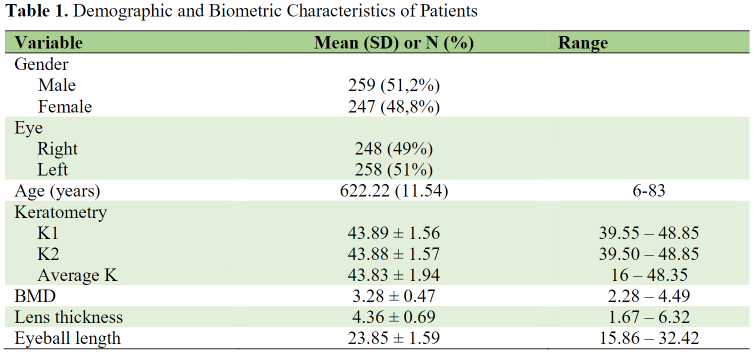The use of Visual Function Index-14 (VF-14) questionnaire in determining cataract patients’ quality of life in Jonggol subdistrict, Indonesia
Oral Presentation - Observational Study - General practitioner
DOI:
https://doi.org/10.35749/h07pbw45Keywords:
cataract, Visual Function Index-14 (VF-14),, quality of lifeAbstract
Abstract
Introduction & Objectives : Unresolved cataract primarily has caused patients to have disturbance in carrying out daily activities, thus lowering their quality of life (QoL). We aim to use the Visual Function Index-14 (VF-14) questionnaire, one of the most frequently used tools, to discover the extent of daily activities disturbance in patients with cataract.
Methods : In this observational study, we conducted eye screening to 47 subjects in Jonggol subdistrict, Bogor, Indonesia. Patients were asked several questions based on the translated VF-14 questionnaire into Bahasa and also tested to find out their best-corrected visual acuities. Lens examination was carried on using handheld slit lamp.
Results : Out of all 47 subjects, 34 (72,3%) patients had cataract that was marked by lens opacities in either one or both eyes. According to distant vision impairment categories by International Classification of Diseases 11, 8,8% of cataract patients had normal vision from the better eye, 20,6% had mild, 64,7% had moderate, 0% had severe impairment, and 5,9% had blindness. From the assessment using VF-14 translated questionnaire, 14,7% subjects had no disruption in doing daily activities, 82,3% had disruption, and 2,9% could not do the mentioned activities at all. From the Spearman correlation test, there was a significant association with moderate correlation between the degree of vision impairment and QoL (p = 0.006, rs = 0.459).
Conclusion : The majority of cataract patients in Jonggol subdistrict had moderate vision impairment and had disruption in doing daily activities, therefore lowering their QoL.
Downloads
References
(-)
Published
Issue
Section
License

This work is licensed under a Creative Commons Attribution-NonCommercial-ShareAlike 4.0 International License.



